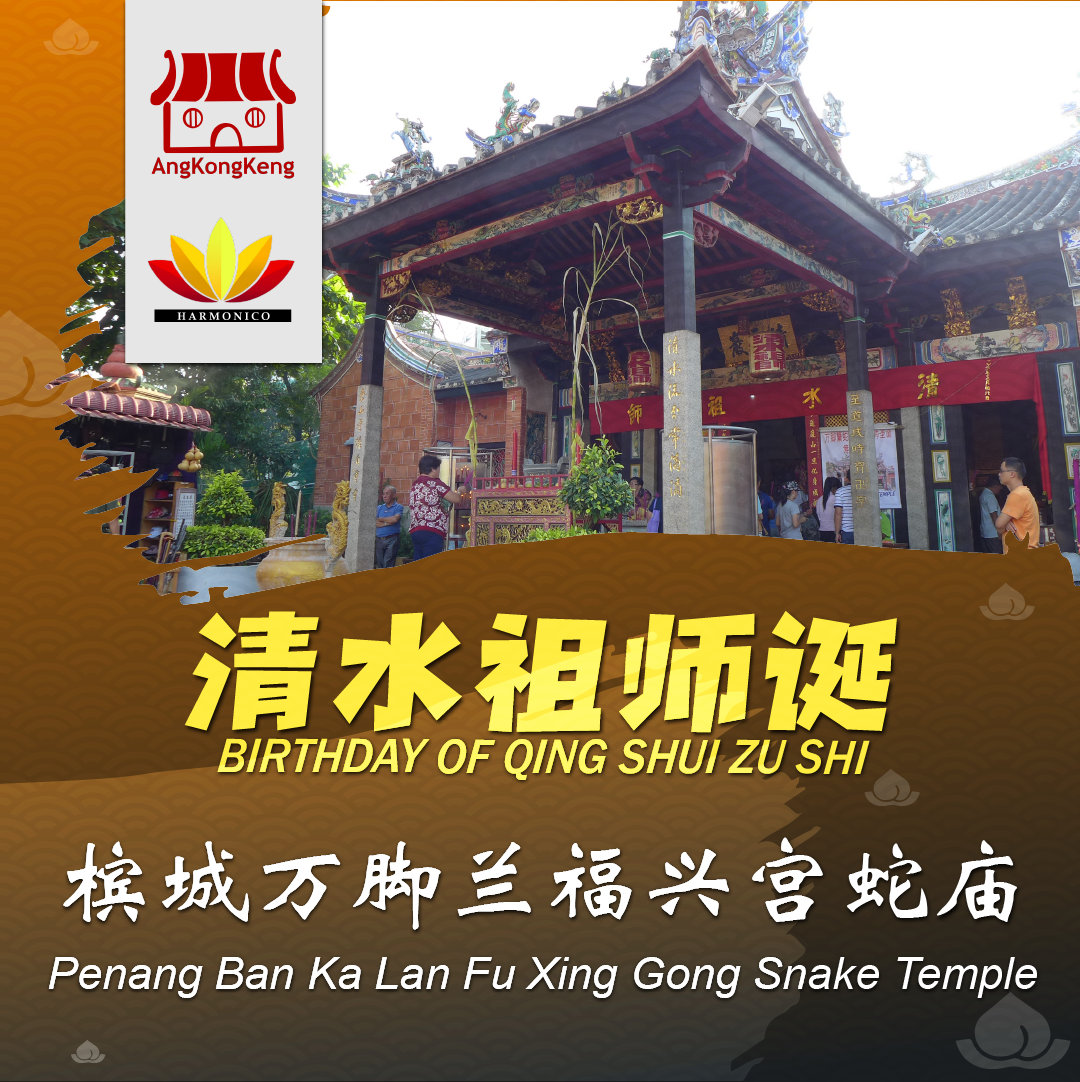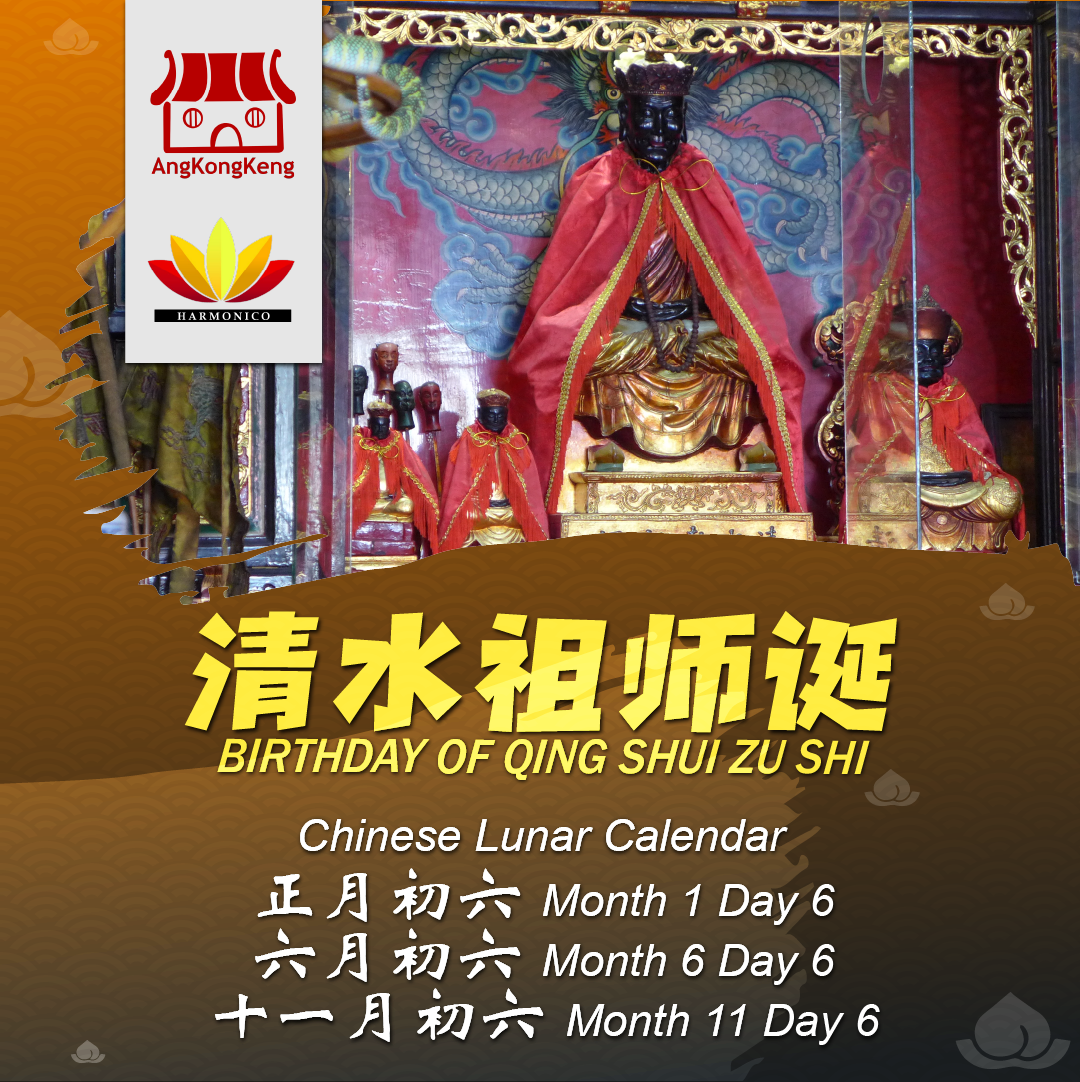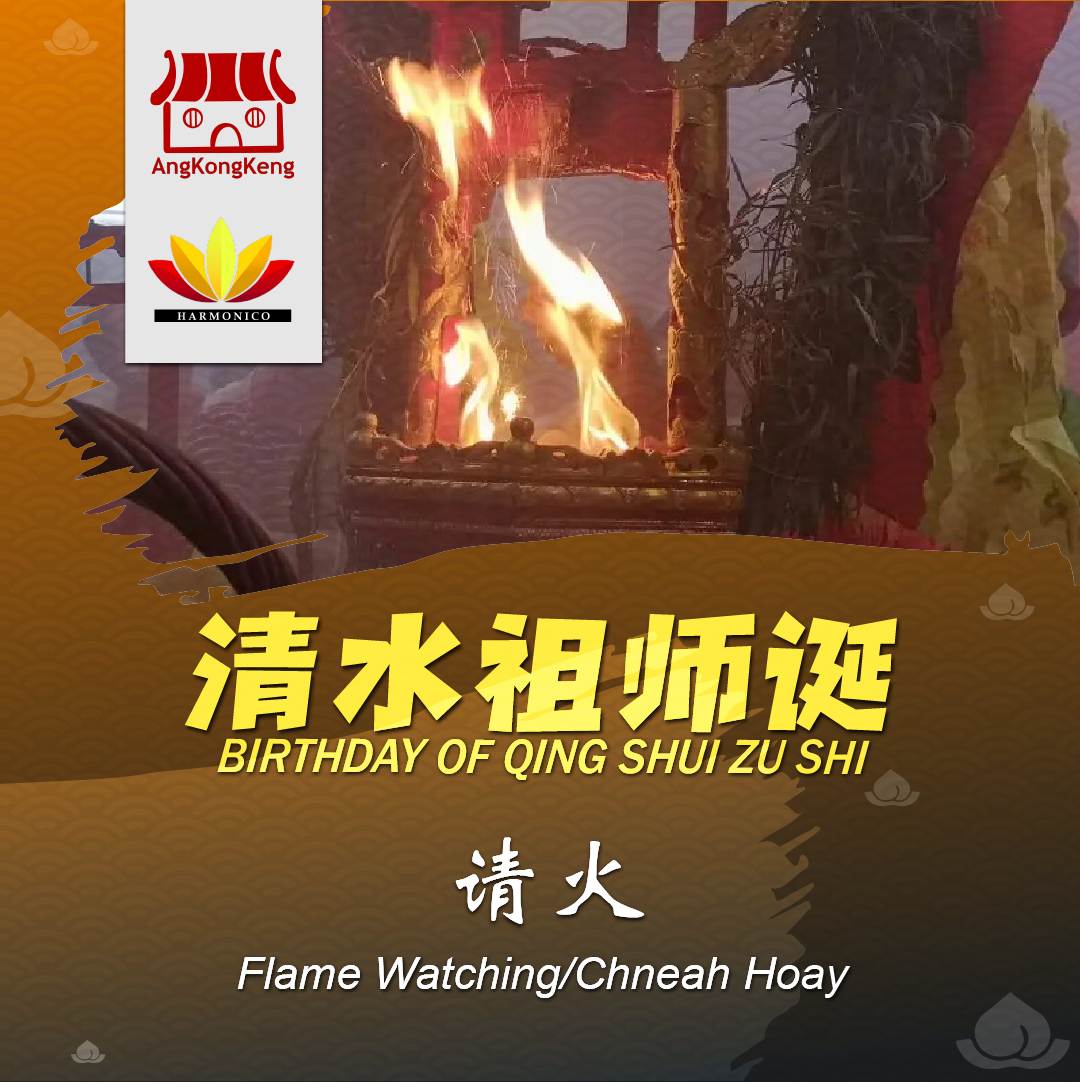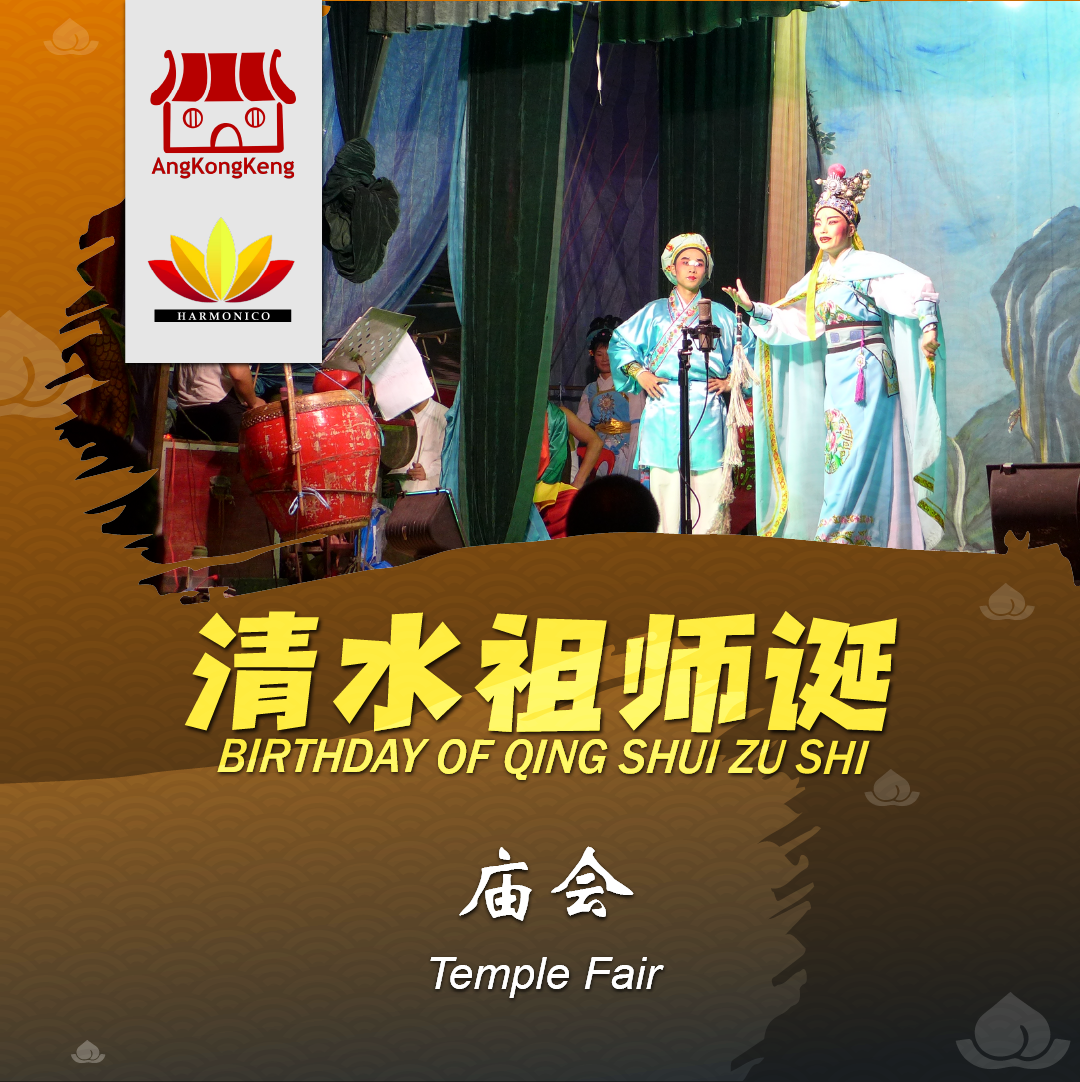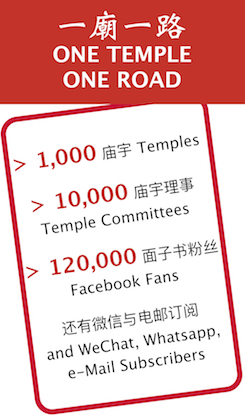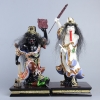清水祖师,俗称“祖师公”,是北宋时代福建泉州安溪的高僧。由于清水祖师为受困于旱灾的民众祈雨消灾,屡祷屡灵;铺桥造路、广施医药救人无数,圆寂后,成为安溪县民信仰最诚的地方神衹。清水祖师千秋宝诞是在农历正月初六、六月初六及十一月初六。
福兴宫,即闻名遐迩的望脚兰蛇庙,又称清云岩,原来是1820-1830年代,南来安溪籍和尚奉祀清水祖师的简陋私庙。1836年前后,清水祖师信仰在槟城闽南人社会已经逐渐普遍,被视为医药之神。它实为清和社清水祖师香火之本,固有正月初五子夜请火的仪式延传至今。请火仪式也成为预测槟城经济发展的独特道教仪式。
Qing Shui Zu Shi, also known as Chó͘-su-kong in Hokkien, was a Zen Buddhist monk during the Northern Song from An Xi County, Quanzhou. He was said to have supernatural powers that bringing rain to save people during drought, curing sickness with herbs and building bridges to ease villagers. In reverence, the villagers built shrines for him and hence became a famous Deity in Chinese folk religion. The Birthday of Qing Shui Zu Shi is on Chinese Lunar calendar: Month 1 Day 6, Month 6 Day 6 and Month 11 Day 6.
Hock Hin Keong is better known as the Ban Kah Lan Snake Temple. Located in the vicinity of a disembarkation point in Sungei Kluang called Pengkalan, it is also called Cheng Hoon Gam. It originally started in the period of 1820’s-1830’ as a private place of worship of an An Xi monk devoted to Qing Shui Zu Shi. The worship of Qing Shui Zu Shi became gradually popular in about 1836, and was the place of origin from where Cheng Hoe Seah obtained its incense. The Chneah Hoay or Flame-watching ritual at mid-night on the eve of the Qing Shui Zu Shi Birthday on the 6th day of the 1st moon of the Chinese calendar has thus been continued and propagated until today. The Flame-watching ritual also becomes the annual prediction of Penang economy.
